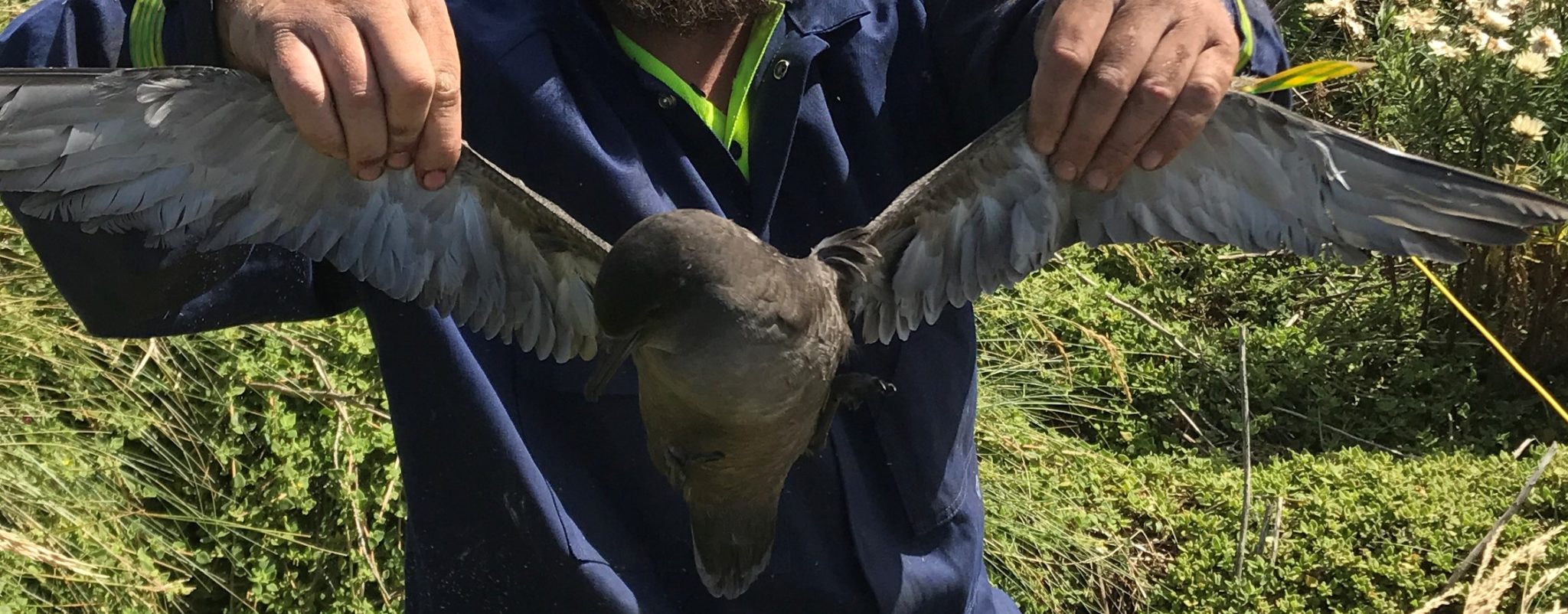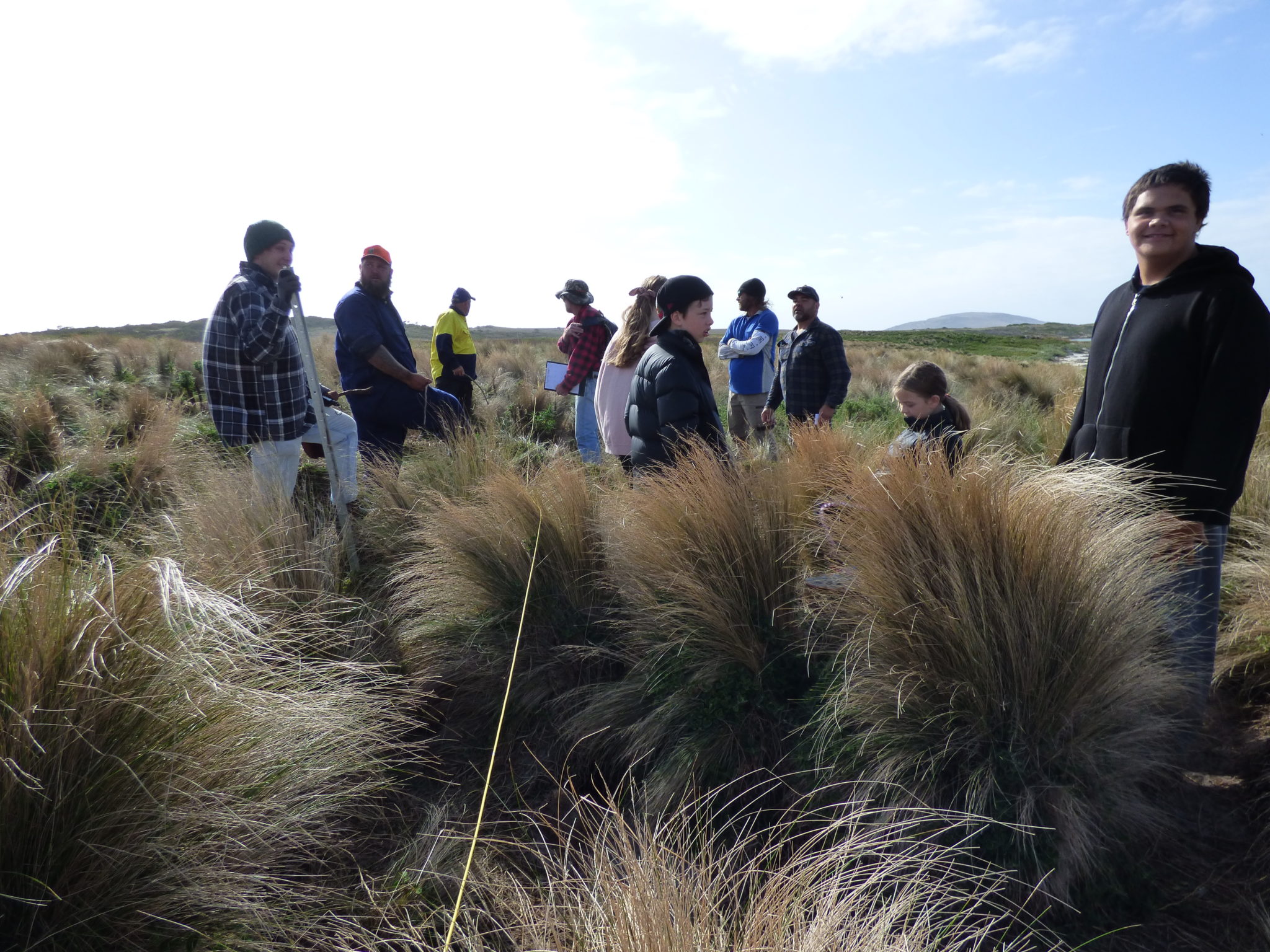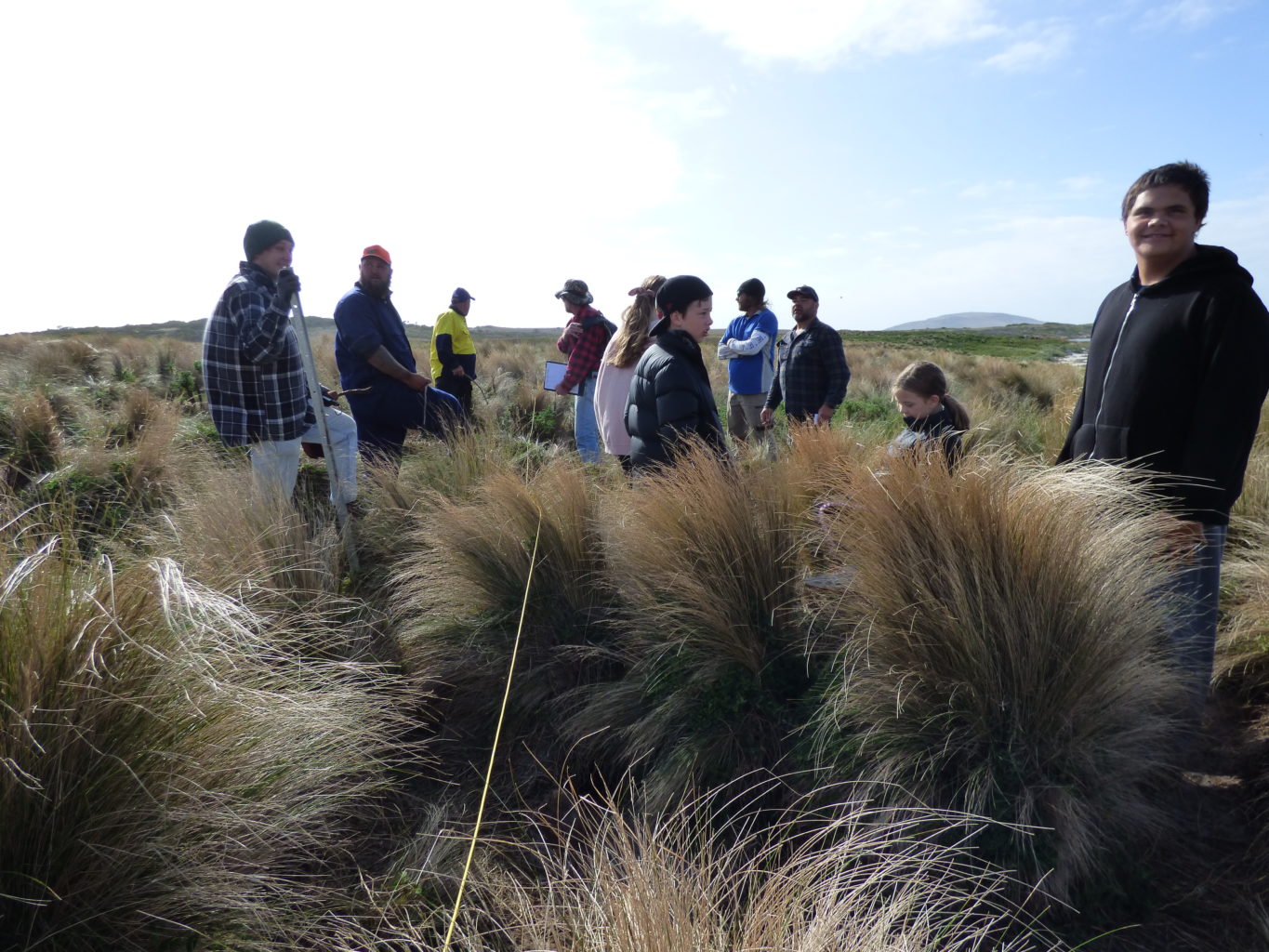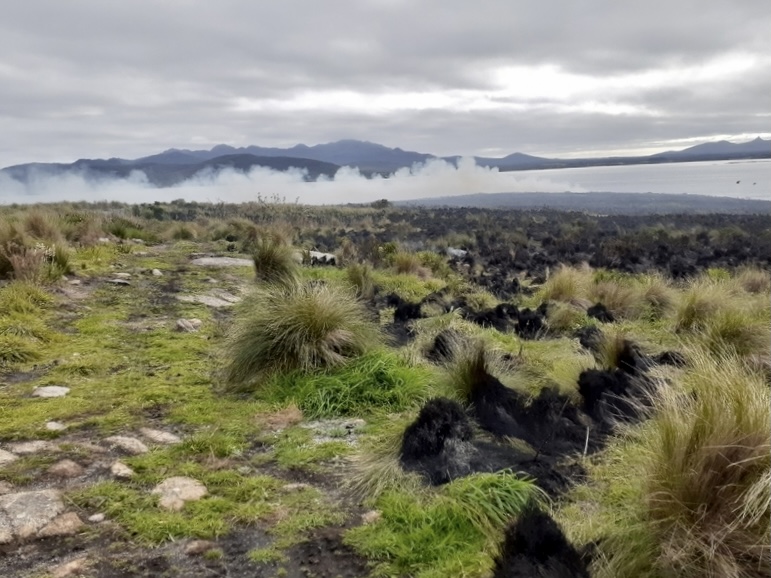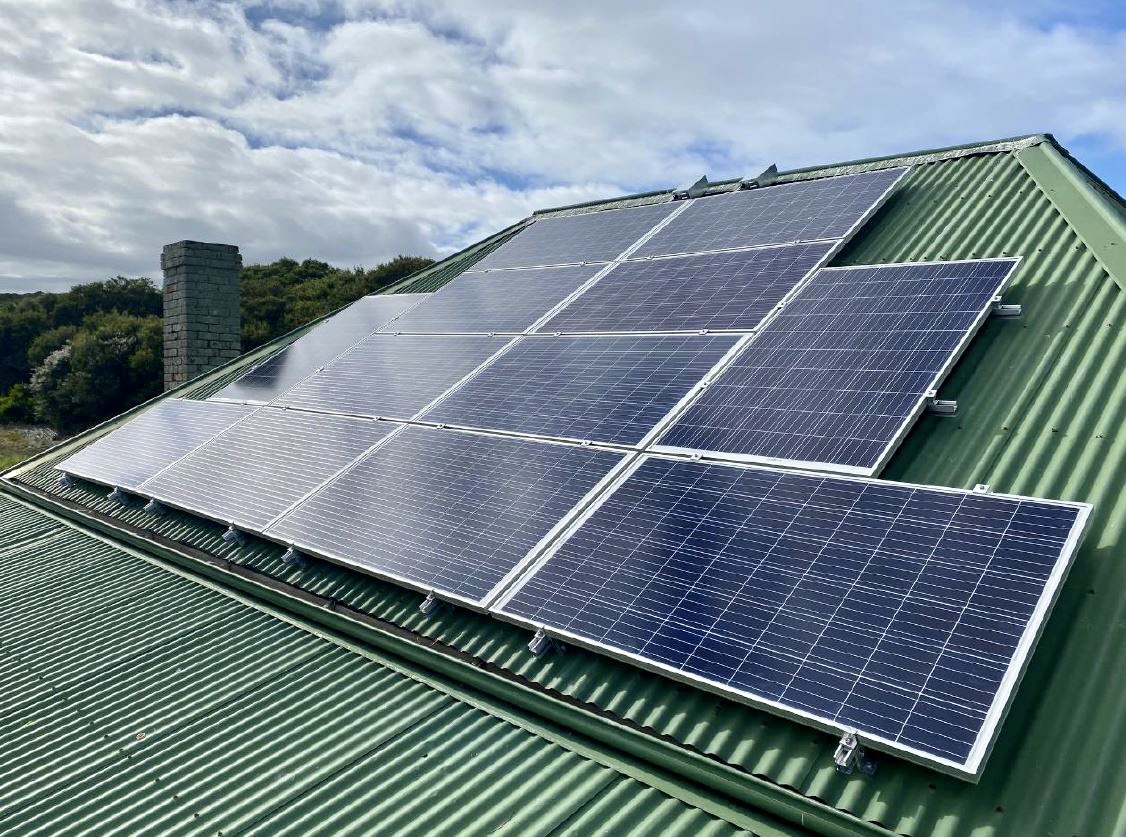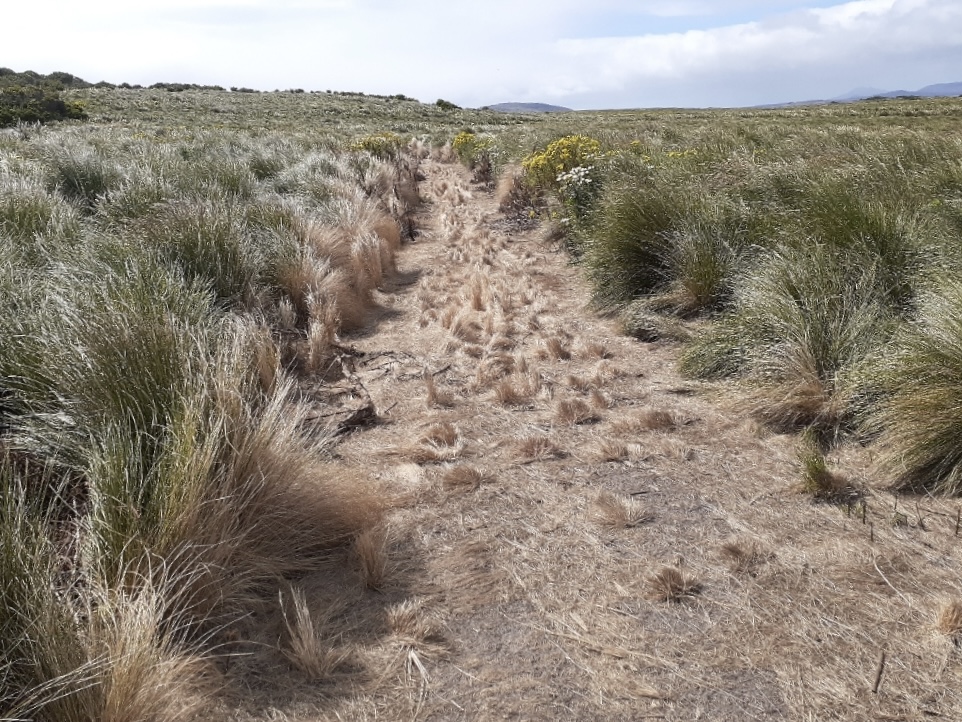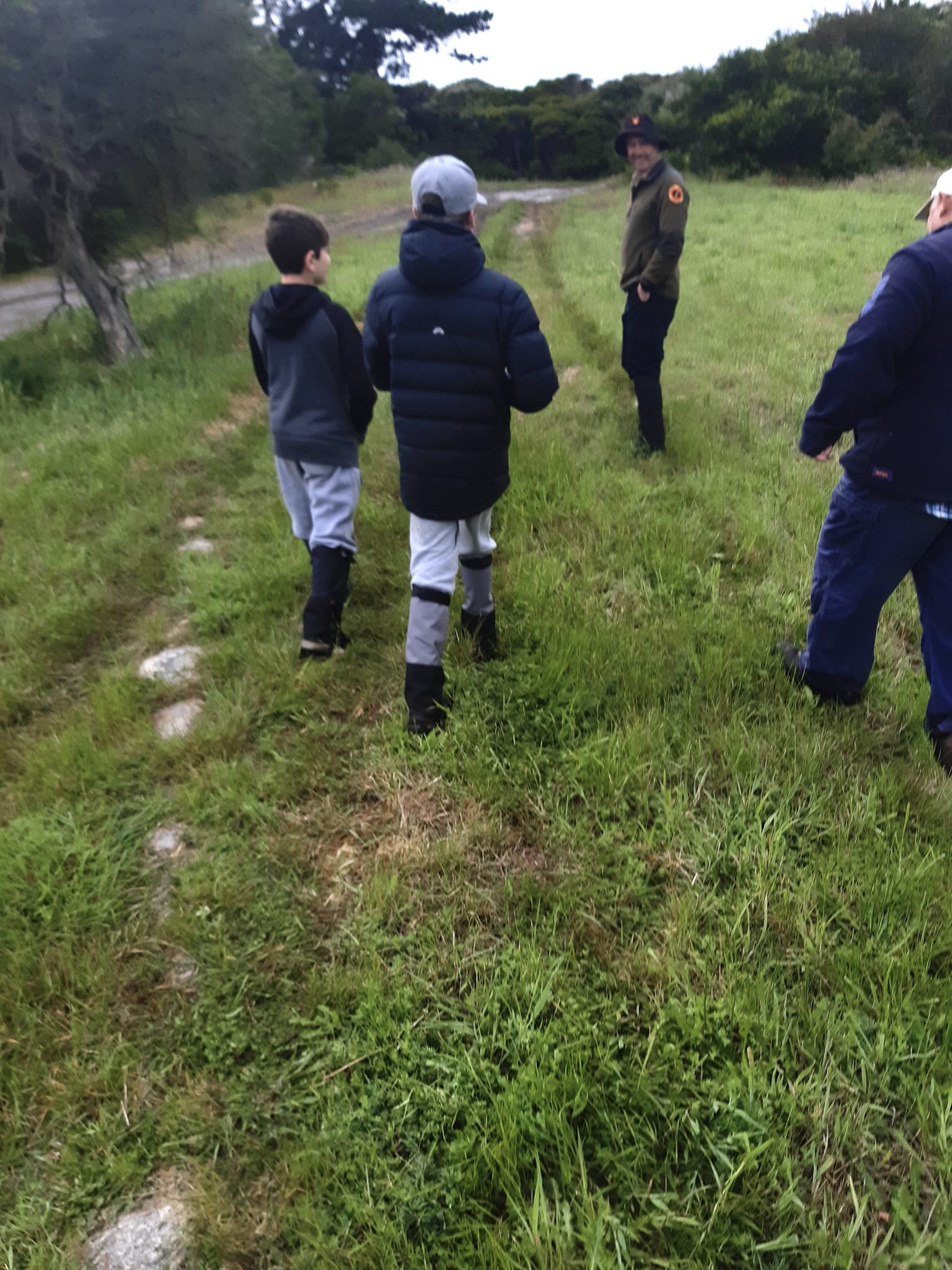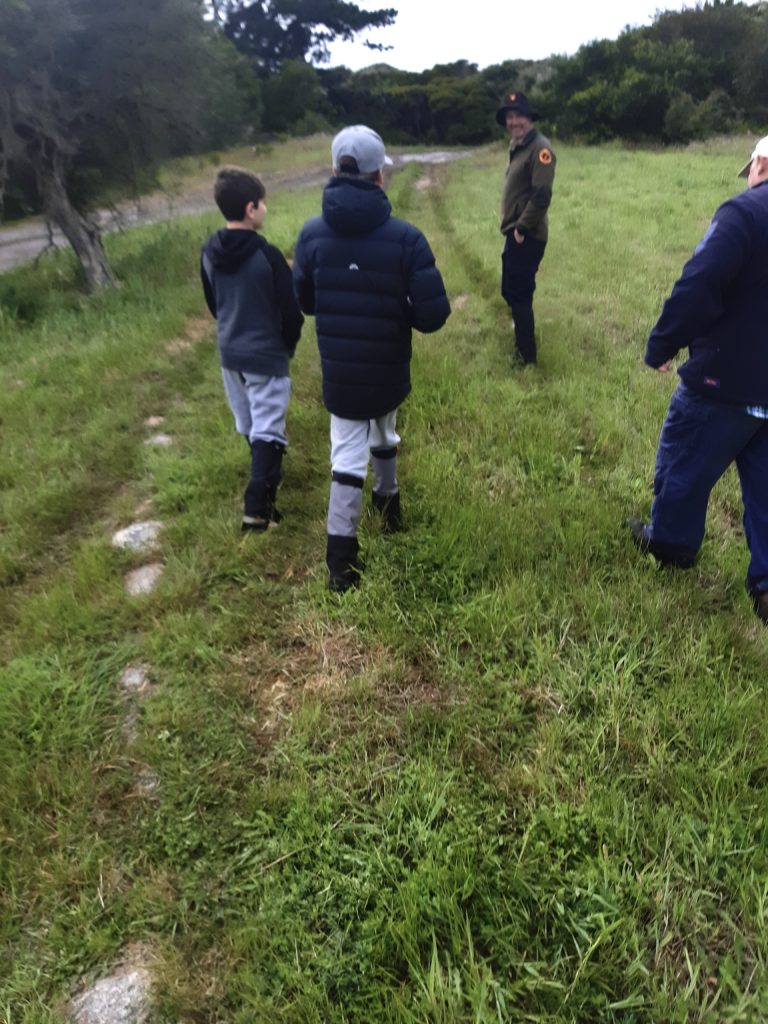The island that Aboriginal people call Big Dog Island (also known as Great Dog Island) is an isolated place northeast of Tasmania’s main island. It’s a “mutton bird island”—that is, home to a big population of mutton birds, also called yula or short-tailed shearwaters.
The annual mutton bird harvest on the islands in Bass Strait has been going on for an estimated 10,000 years or more. That makes it one of the longest uninterrupted food-gathering activities in the world. Aboriginal hunters carefully assess how many birds to take and call off harvests when bird numbers are low.
Big Dog Island is an Indigenous Protected Area. That means indigenous communities, through agreements with the Australian government, manage it for biodiversity conservation. This project will protect Big Dog Island’s tussock grass rookeries and thickets, ensuring that mutton birds stay abundant. The aboriginal managers will prevent illegal harvesting of the birds, keep sheep and cattle out, and manage invasive weeds.
Our partner, the Tasmanian Aboriginal Centre, will use a Seacology grant to install solar power at a renovated house on Big Dog Island. The house is used for cultural practices, explorations of heritage, and conservation. Children and young people are a target demographic. For example, young people from mainland Tasmania, under the watchful eye of experienced islanders, recently helped conduct the annual count of mutton bird chicks. The experience gave the young people a sense of connection to culture, land, and community. It also instilled lessons of strength, of pride, and of the importance of culturally appropriate conservation.
The solar power system will replace a diesel generator, reducing fossil fuel pollution, cutting costs, and improving access.


